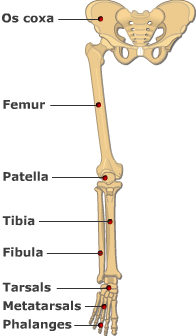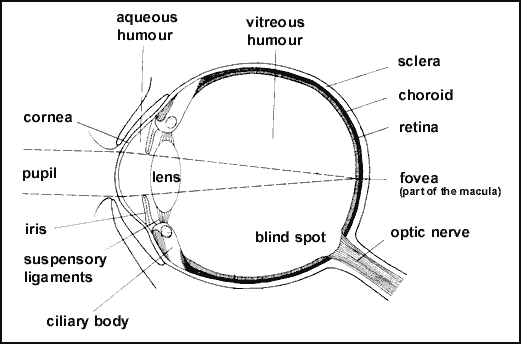
CATEGORIES:
BiologyChemistryConstructionCultureEcologyEconomyElectronicsFinanceGeographyHistoryInformaticsLawMathematicsMechanicsMedicineOtherPedagogyPhilosophyPhysicsPolicyPsychologySociologySportTourism
Epithelial tissue
The epithelial tissues are formed by cells that cover organ surfaces such as the surface of the skin, the airways, the reproductive tract, and the inner lining of the digestive tract. The cells comprising an epithelial layer are linked via semi-permeable, tight junctions; hence, this tissue provides a barrier between the external environment and the organ it covers. In addition to this protective function, epithelial tissue may also be specialized to function in secretion and absorption. Epithelial tissue helps to protect organisms from microorganisms, injury, and fluid loss.
Skeletal system
206 bones, 33 vertebrae: 7 cervical, 12 thoratic, 5 lumbar, 5 sacral, 4 coccygeal




Nervous system





Digestive System



§ Pepsinogen is the main gastric enzyme. It is produced by the stomach cells called "chief cells" in its inactive form pepsinogen, which is a zymogen. Pepsinogen is then activated by the stomach acid into its active form, pepsin. Pepsin breaks down the protein in the food into smaller particles, such as peptide fragments. and amino acids. Protein digestion therefore first starts in the stomach, unlike carbohydrate and lipids that started their digestion in the mouth.
§ Hydrochloric acid (HCl): This is essentially positively charged hydrogen atoms (H), or in the layman's term "stomach acid," and is produced by the cells of the stomach called parietal cells. HCl mainly functions to denature the proteins ingested, to destroy any bacteria or virus that remains in the food, and also to activate pepsinogen into pepsin.
§ Intrinsic factor (IF): Intrinsic factor is produced by the parietal cells of the stomach. Vitamin B12 (Vit. B12) is an important vitamin that requires assistance for absorption in terminal ileum. Initially in the saliva, haptocorrin
secreted by salivary glands, binds Vit. B, creating a Vit B12-Haptocorrin complex. The purpose of this complex is to protect Vitamin B12 from hydrochoric acid produced in the stomach. Once the stomach content exits the stomach, into the duodenum, haptocorrin is cleaved with pancreatic enzymes, releasing the intact vitamin B12. Intrinsic factor (IF) produced by the parietal cells then binds Vitamin B12 creating a Vit. B12-IF complex. This complex is then absorbed at the terminal portion of the ileum.§ Mucin: The stomach has a priority to destroy the bacteria and viruses using its highly acidic environment but also has a duty to protect its own lining from its acid. The way that stomach achieves this protection is by secreting mucin and bicarbonate via its mucous cells, and also by having a rapid cell turn over.
§ Gastrin: This is an important hormone produced by the "G cells" of the stomach. G cells, produce gastrin in response to stomach stretching occurring after food enters it, and also after stomach exposure to protein. Gastrin, is an endocrine hormone and therefore enters the circulation of blood and eventually returns to the stomach where it stimulates parietal cells to produce their hydrochloric acid (HCl) and Intrinsic factor (IF).
There are four types of cells in the stomach:
§ Parietal cells: Produce hydrochloric acid and intrinsic factor.
§ Gastric chief cells: Produce pepsinogen. Chief cells are mainly found in the body of stomach which is the middle or superior anatomic portion of the stomach.
§ Goblet cells: Produce mucin and bicarbonate to create a "neutral zone" to protect the stomach lining from the acid or irritants in the stomach chyme
.§ G cells: Produce the hormone gastrin in response to distention of the stomach mucosa or protein, and stimulate parietal cells production of their secretion. G cells are majorly located in the antrum of the stomach which is the most inferior region of the stomach.
Pancreatic juice, composed of the secretions of both ductal and acinar cells, is made up of the following digestive enzyme]:
§ Trypsinogen, which is an inactive(zymogenic) protease that, once activated in the duodenum, into trypsin, breaks down proteins at the basic amino acids. Trypsinogen is activated via the duodenal enzyme enterokinase into its active form trypsin.
§ Chymotrypsinogen, which is a inactive(zymogenic) protease that once activated by duodenal enterokinase, breaks down proteins at their aromatic amino acids. Chymotrypsiongen can also be activated by trypsin.
§ Carboxypeptidase, which is a protease that takes off the terminal amino acid group from a protein
§ Several elastases that degrade the protein elastin and some other proteins.
§ Pancreatic lipase that degrades triglycerides into fatty acids and glycerol.
§ Cholesterol esterase
§ Phospholipase
§ Several nucleases that degrade nucleic acids, like DNAase and RNAase
§ Pancreatic amylase that, besides starch, and glycogen, degrades most other carbohydrates. Humans lack the enzyme to digest the carbohydrate cellulose, mainly due to its special hydrogen bonding structure.
Throughout the lining of the small intestine there are numerous "brush border" enzymes whose function is to further cleave the already broken down products of digestion into absorbable particles. Some of these enzymes include:
§ Sucrase
§ Lactase: This is a significant brush border enzyme in that a majority fo Middleastern and Asian population lack this enzyme and also this enzyme decreases by age, and as such lactose intolerance is often a common abdominal complaint in the Middleastern, Asian, and older population, manifesting with bloating, abdominal pain, and osmotic diarrhea.
§ Maltase
§ Other disaccharidases
Human eye structure
Eyebrow, eyelid, eyelashes

Human ear structure

Human Circulatory System

Human Respiratory System

Human Endocrinal System


Date: 2015-01-02; view: 2606
| <== previous page | | | next page ==> |
| Muscle tissue | | | Piece work system of remuneration |